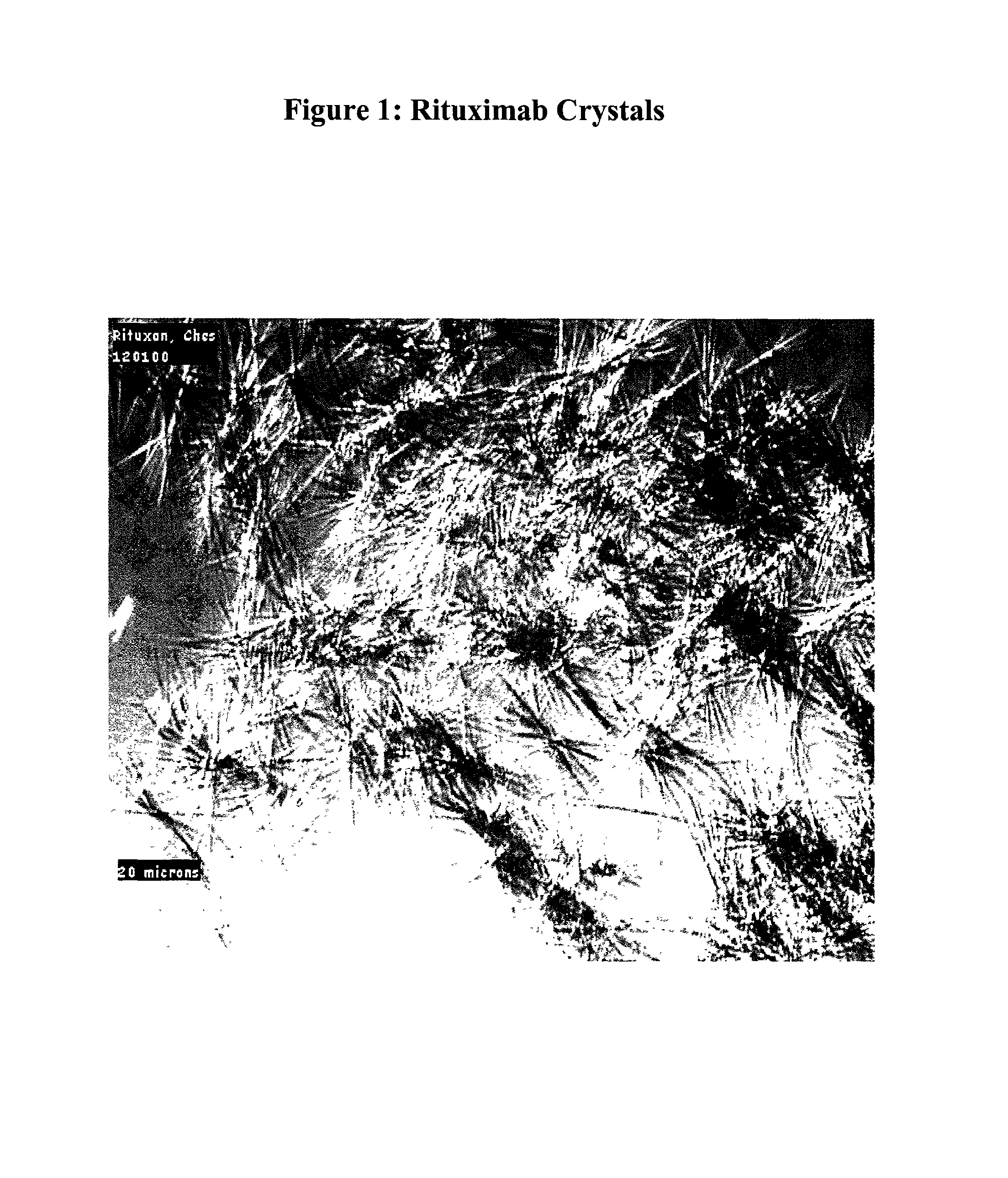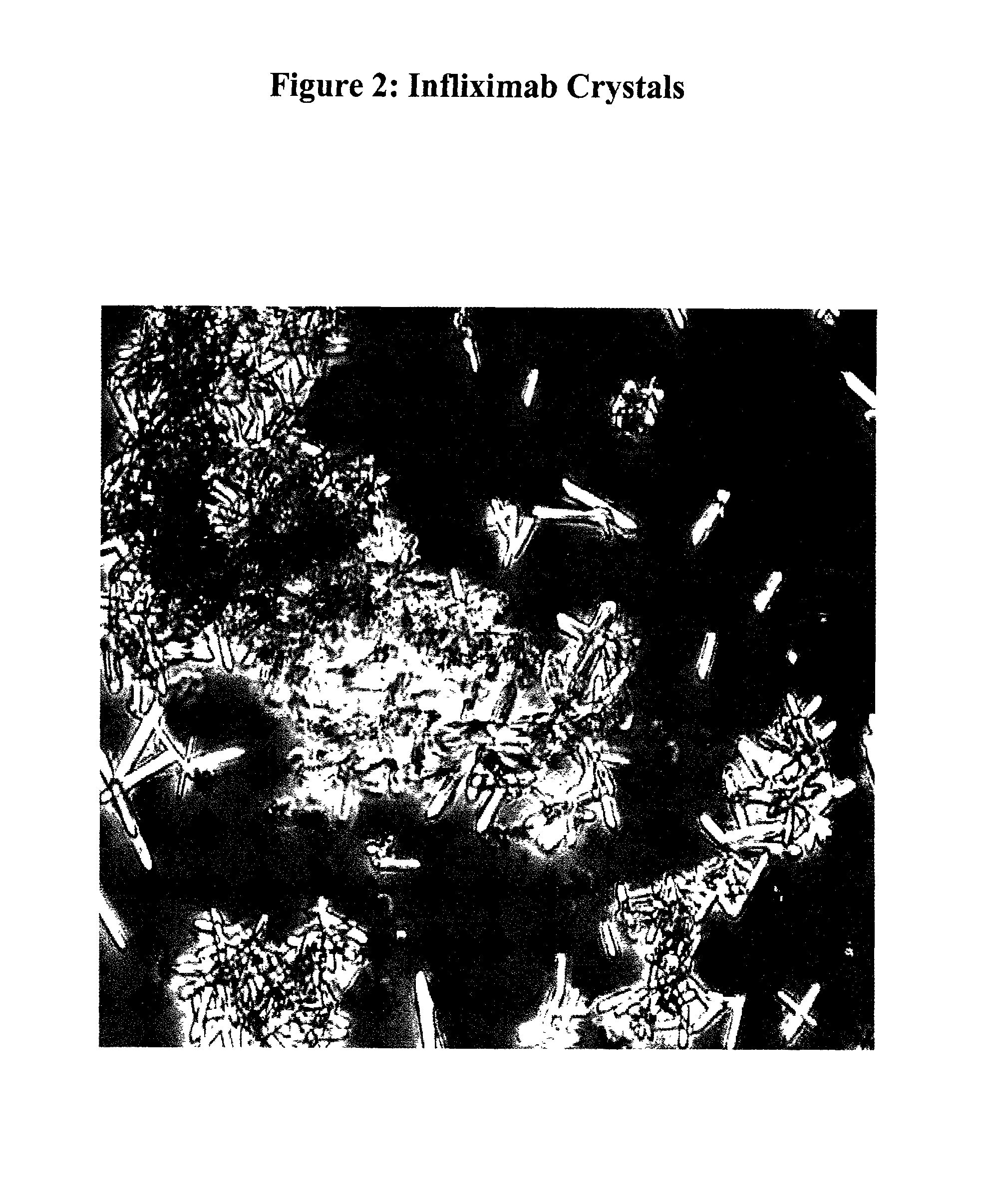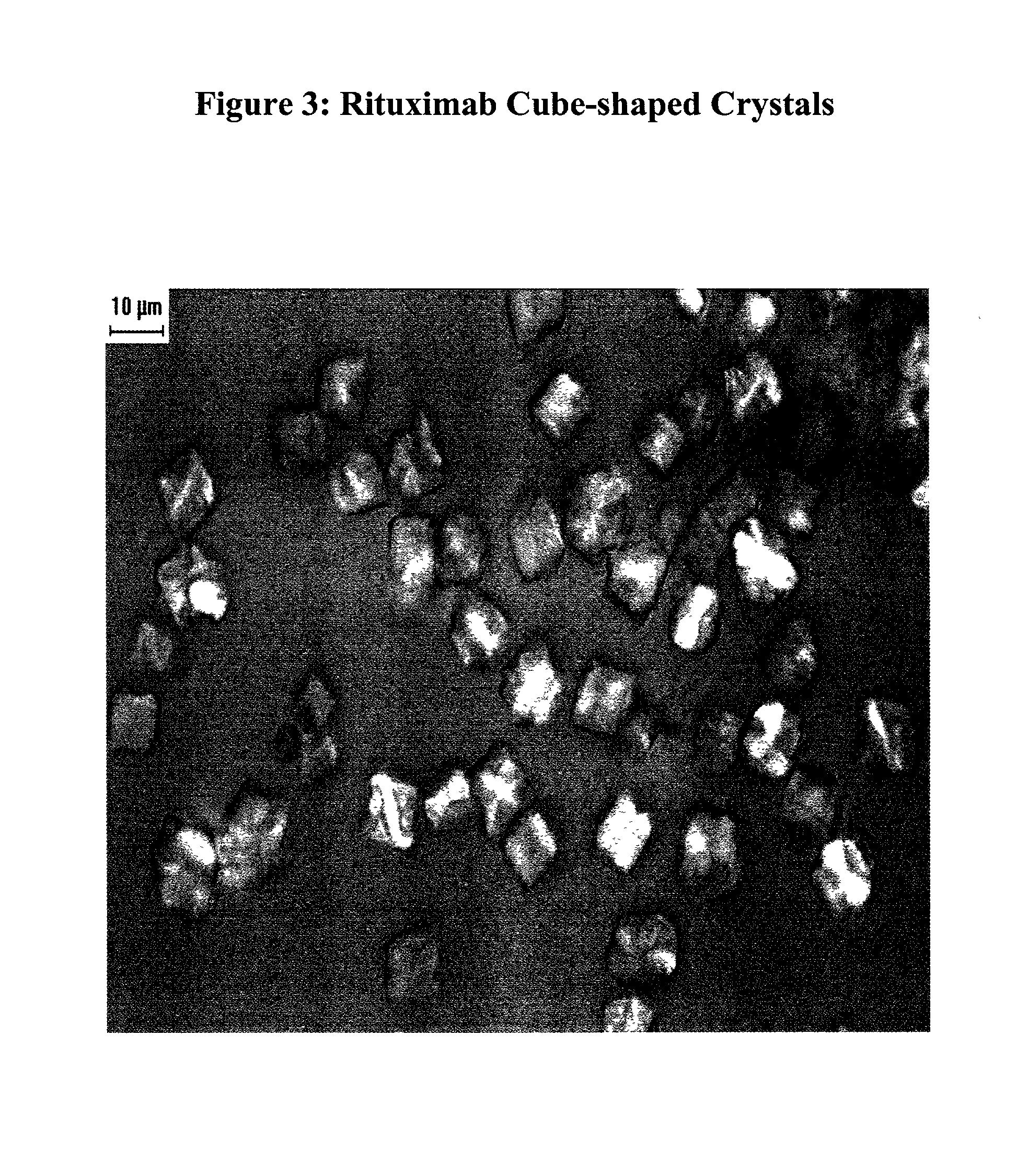Crystals of whole antibodies and fragments thereof and methods for making and using them
a technology of whole antibodies and crystals, which is applied in the field of crystals of whole antibodies and fragments thereof, can solve the problems of limiting the use of antibodies, particularly in therapeutic regimens, and the sensitivity of the structure of antibodies to chemical and physical denaturation, and achieves the effect of slow release of antibodies and increased effective biological half-life of whole antibodies or antibody fragments in vivo
- Summary
- Abstract
- Description
- Claims
- Application Information
AI Technical Summary
Benefits of technology
Problems solved by technology
Method used
Image
Examples
example 1
[0232]Rituximab
[0233]Rituximab is a chimeric murine / human monoclonal antibody commercially available as Rituxan™ (Genentech, Inc., South San Francisco, Calif.). This monoclonal antibody has been widely used to treat non-Hodgkins lymphoma. Rituximab is a chimeric IgG1 kappa immunoglobulin that binds to the CD20 antigen on the surface of normal and malignant B-lymphocytes. It is composed of murine light- and heavy-chain variable region sequences and a human constant region sequence. The Rituximab antibody has an approximate molecular weight (MW) of 145 kD.
[0234]Rituximab Crystallization, Batch 1:
[0235]Materials:[0236]A—Rituximab antibody (stored until use at 4° C., at 10 mg / ml in 9.0 mg / ml sodium chloride, 7.35 mg / ml sodium citrate anhydrate, 0.7 mg / ml Polysorbate 80 and sterile water, pH 6.5)[0237]B—Wizard I crystal screening kit (Emerald BioStructures, Bainbridge Island, Wash.)[0238]C—Polyethylene glycol-1000 (PEG-1000)[0239]D—Imidazole[0240]E—Calcium acetate buffer pH 8.0
[0241]Proc...
example 2
[0243]Rituximab Crystallization, Batch 2:
[0244]Rituximab crystals were obtained as in Example 1, except that crystallization was initiated by mixing 500 μl of Rituximab (10 mg / ml) with an equal volume of crystallization buffer containing 20% (w / v) PEG-1000, 100 mM imidazole, and 200 mM calcium acetate, pH 7.0. After seeding with Rituximab seed crystals from a microbatch, the mixture was tumbled in a hematology / chemistry mixer (Model 346, Fisher Scientific) at room temperature at 50 rpm. After overnight tumbling, Rituximab crystals in the form of needle clusters were formed. This protocol has been repeated, at pH 4.0, 5.0, 6.0 and 8.0, with similar results.
example 3
[0245]Microbatch Crystallization Screening of Rituximab:
[0246]Rituximab crystals were obtained as in Example 1, except that crystallization was initiated by mixing 60 μl of Rituximab (10 mg / ml) with an equal volume of crystallization buffer containing 20% (w / v) PEG-600, 100 mM calcium acetate, and 50 mM 2-[N-cyclohexylamino] ethanesulfonic acid (CHES), pH 9.5. The final concentration of the Rituximab in solution was 5 mg / ml. After seeding with Rituximab seed crystals from a previously obtained microbatch, the mixture was incubated in a benchtop shaker / incubator (New Brunswick Scientific, Model C25), at 25° C. at 650 rpm. After overnight incubation, Rituximab crystals in the form of needle clusters (FIG. 1) were formed. 80% of the input Rituximab was crystallized in this example.
PUM
| Property | Measurement | Unit |
|---|---|---|
| volumes | aaaaa | aaaaa |
| concentration | aaaaa | aaaaa |
| concentration | aaaaa | aaaaa |
Abstract
Description
Claims
Application Information
 Login to View More
Login to View More - R&D
- Intellectual Property
- Life Sciences
- Materials
- Tech Scout
- Unparalleled Data Quality
- Higher Quality Content
- 60% Fewer Hallucinations
Browse by: Latest US Patents, China's latest patents, Technical Efficacy Thesaurus, Application Domain, Technology Topic, Popular Technical Reports.
© 2025 PatSnap. All rights reserved.Legal|Privacy policy|Modern Slavery Act Transparency Statement|Sitemap|About US| Contact US: help@patsnap.com



